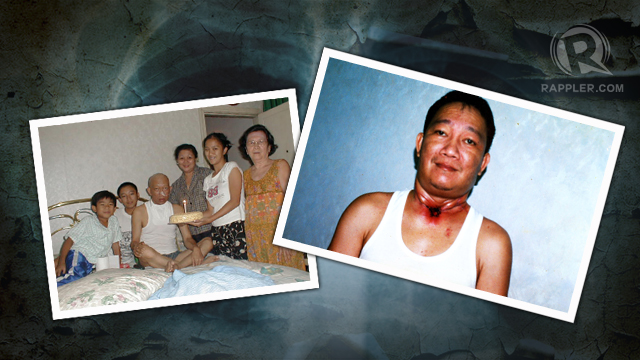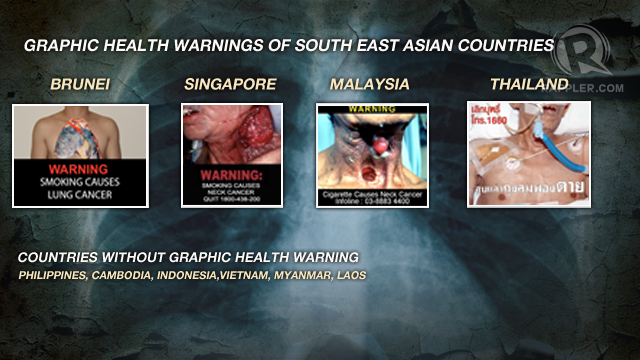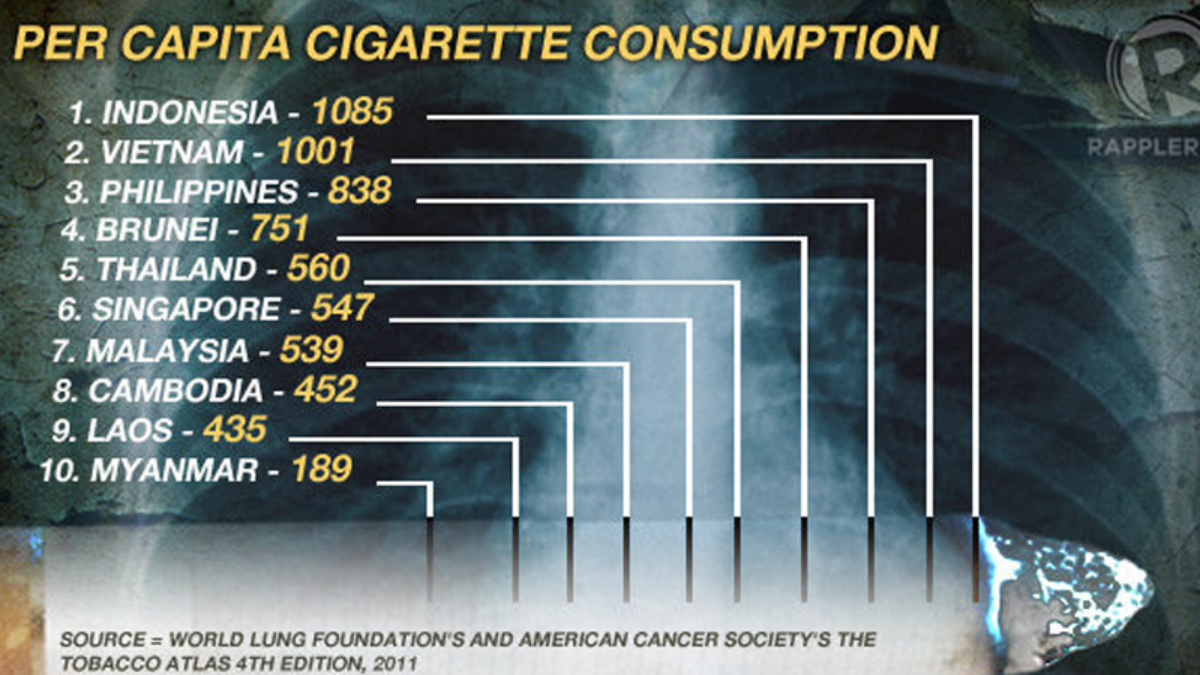MANILA, Philippines – Emer Rojas, 54, was once a smooth talking radio announcer. But when I came to interview him, he was dead silent. Without a word, he carefully placed two fresh batteries in a small black electrolarynx, pressed the device to where his vocal chords were cut, and buzzed to life.
“People call me the walking graphic health warning,” he said in a robotic voice.
In 2002, after 27 years of chain-smoking, Rojas was diagnosed with stage 4 laryngeal cancer.
He lost his voice box. In chemotherapy, his firm 160-pound frame was reduced to a skeletal 90 pounds.
He may be the closest thing the Philippines has to a warning that shows the gruesome effects of smoking.

It has been almost a decade since the Philippines agreed to enforce stricter tobacco control policies by signing the Framework Convention on Tobacco Control (FCTC). But the country is still on square one when it comes to picture-based warnings.
More than 4 years ago, in September of 2008, the Philippines missed its deadline for instituting more effective tobacco warnings, which should cover at least 30% of the front and back of packages and may include pictures.
Because of Congress’ failure to pass House Bill 3364 (or “An Act to Effectively Instill Health Consciousness through Picture-based Warnings on Tobacco Products”) in 2008, then Health Secretary Esperanza Cabral issued an administrative order that sought to accomplish what the bill failed to do.
She issued AO 2010-0013 in May 2010. The following month, cigarette companies filed 5 cases in 5 different local courts against the AO. Fortune Tobacco and Japan Tobacco asked regional trial courts to declare the order invalid. La Suerte, Philip Morris Fortune Tobacco Corporation (PMFTC) and Mighty Corporation asked the courts to rule on the authority of the health department to issue the order.
Across the board, implementation of the order has been stalled in the regional courts. Even Mighty Corporation’s case, which was elevated to the Supreme Court En Banc, has not been resolved, despite a very urgent motion filed by the government.
Worse, Cabral was replaced by the new President in mid-2010. Her successor, Secretary Enrique Ona, has been less zealous in fighting for graphic health warnings.

According to the Canadian Cancer Society, 40% of the world’s population lives in countries or jurisdictions that have finalized requirements for picture warnings.
Of the top 6 economies in the Association of South East Asian Nations (ASEAN), 4 already have graphic health warnings (Thailand, Singapore, Malaysia, and Brunei). A 5th, Indonesia, passed a regulation,signed by the President on December 24, 2012, to adopt picture warnings in a year and a half. That means soon the Philippines will be the only one of the top 6 ASEAN economies not to require the warnings.
Implementation of the graphic health warning, which has been identified as one of the most effective ways to deter smoking, has been stalled for 3 reasons – lack of political will, a drawn-out legal battle, and legislative compromise.
Read more here.
